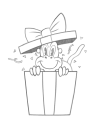Give a gift
Give a gift card for art students to use on anything in the Proko store.
Or gift this course:

About instructor
Founder of Proko, artist and teacher of drawing, painting, and anatomy. I try to make my lessons fun and ultra packed with information.














Assignment: Draw the Hands
Your assignment is to simplify the hand bones into their basic forms. Draw from life using your own hands or draw from the 3D models of the hand bones I provide you. Download the images for the assignment in the downloads tab and get to work! If you have the Premium Anatomy Course, you have 3D models of five dynamic hand bone poses that you can draw from any angle. You might even try drawing the same hand from multiple angles. And if you really want to challenge yourself, look at the model from one angle, but draw it from a different angle. After you’re done drawing, you can rotate the camera to match your drawing angle to check your accuracy. This exercise will help develop your ability to invent hands from imagination.